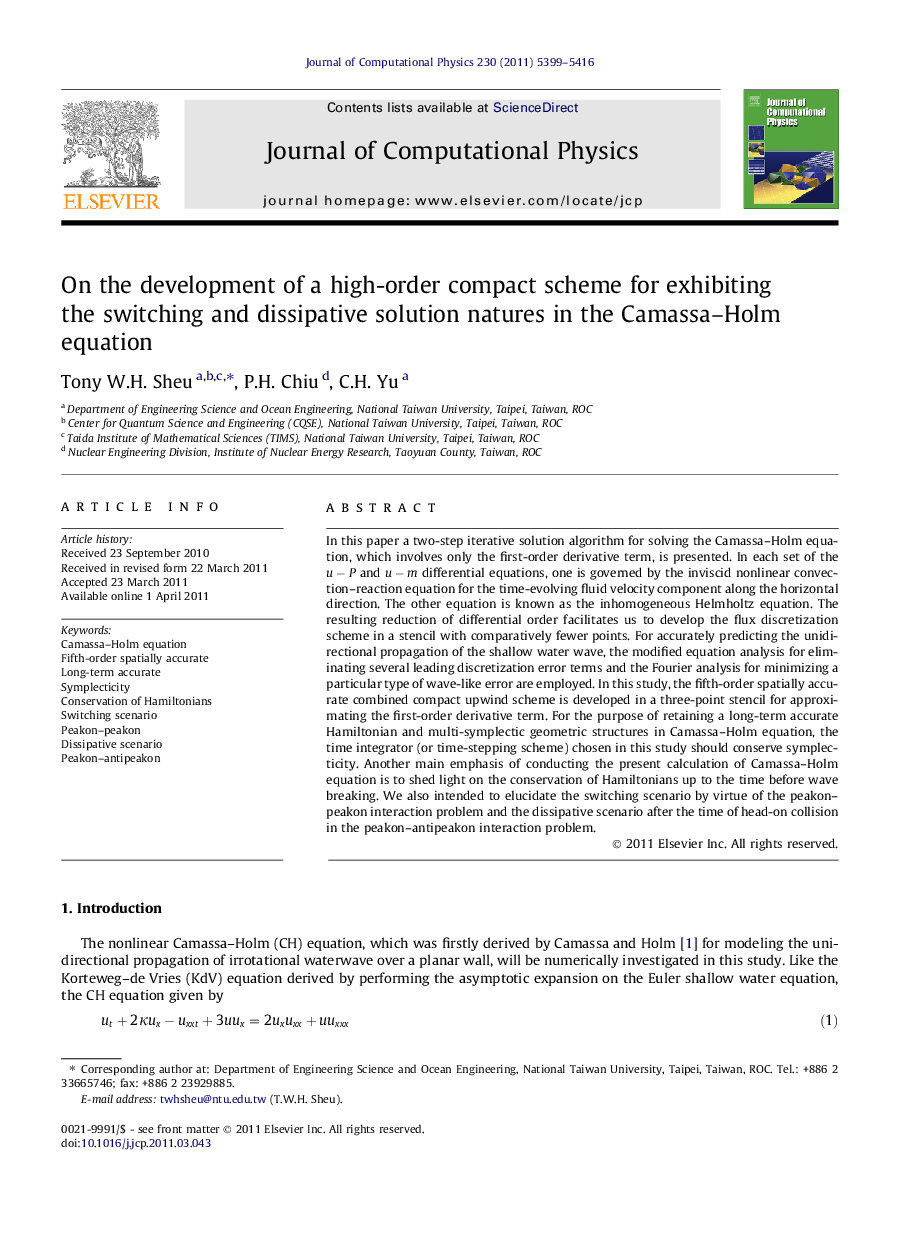| Article ID | Journal | Published Year | Pages | File Type |
|---|---|---|---|---|
| 519654 | Journal of Computational Physics | 2011 | 18 Pages |
In this paper a two-step iterative solution algorithm for solving the Camassa–Holm equation, which involves only the first-order derivative term, is presented. In each set of the u − P and u − m differential equations, one is governed by the inviscid nonlinear convection–reaction equation for the time-evolving fluid velocity component along the horizontal direction. The other equation is known as the inhomogeneous Helmholtz equation. The resulting reduction of differential order facilitates us to develop the flux discretization scheme in a stencil with comparatively fewer points. For accurately predicting the unidirectional propagation of the shallow water wave, the modified equation analysis for eliminating several leading discretization error terms and the Fourier analysis for minimizing a particular type of wave-like error are employed. In this study, the fifth-order spatially accurate combined compact upwind scheme is developed in a three-point stencil for approximating the first-order derivative term. For the purpose of retaining a long-term accurate Hamiltonian and multi-symplectic geometric structures in Camassa–Holm equation, the time integrator (or time-stepping scheme) chosen in this study should conserve symplecticity. Another main emphasis of conducting the present calculation of Camassa–Holm equation is to shed light on the conservation of Hamiltonians up to the time before wave breaking. We also intended to elucidate the switching scenario by virtue of the peakon–peakon interaction problem and the dissipative scenario after the time of head-on collision in the peakon–antipeakon interaction problem.
